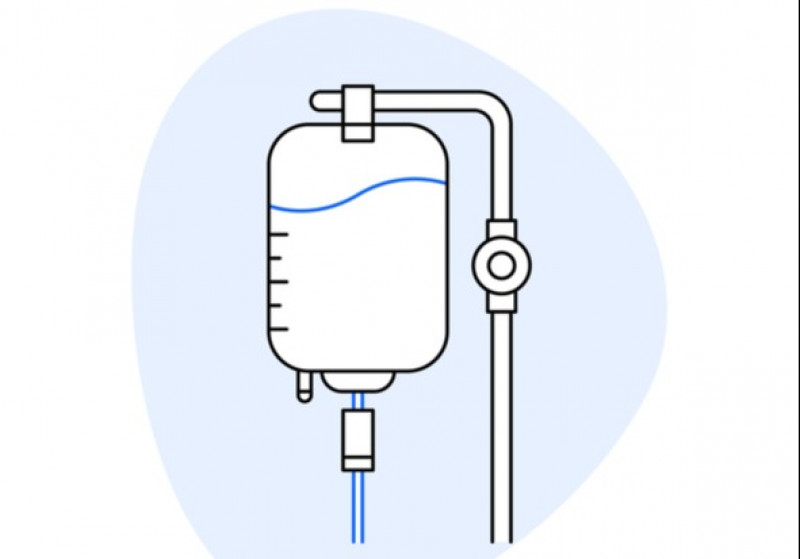
Epinephrine works by binding to alpha-1 and beta-1 receptors in the body to increase vasoconstriction and increase the positive inotropic and chronotropic effects of the heart. We remember this because of its use in cardiac arrest patients, asthma patients, bradycardic patients, and hypotensive patients. We’ve all used epinephrine in varying concentrations, either IM, SQ, IV, or IO, for cardiac arrest calls, anaphylaxis calls, and some respiratory calls because it also affects beta-2 receptors for smooth muscle relaxation in the respiratory tract and nebulized in pediatrics for croup.
Why would we use an epinephrine drip? These are useful in cases where the patient:
- Continues to be hypotensive or bradycardic despite doses of atropine or pacing
- Is hypotensive after a cardiac arrest because the body is still not regulating blood pressure on its own and needs help vasoconstricting
- Is experiencing severe anaphylaxis and is not responding to IV doses of epinephrine or needs repeat doses and is also not responding to fluid boluses
What are the contraindications or concerns for starting an epinephrine drip? There are no contraindications for epinephrine in the emergency setting. However, there are multiple situations where epinephrine use may exacerbate another issue. If a patient has coronary artery disease or is experiencing angina, this may worsen due to the vasoconstriction caused by epinephrine. A patient may also develop a cardiac arrhythmia due to the increased stress on the heart. Pulmonary edema may be caused by increased heart rate and systemic vascular resistance. Decreased renal output may be the result of renal blood vessel constriction. Strokes due to cerebral artery constriction are also possible with the administration of epinephrine. Unlike some other drugs, there is little risk associated with a small amount of extravasation from an epinephrine drip as the concentration is the same or even more dilute than that used for localized injections. However, since it does cause vasoconstriction, localized pallor and/or coldness may occur, especially in the hands and feet.
If we determine it is appropriate to administer an epinephrine drip, what dose do we use, and how do we mix the infusion? That depends on what we are treating. For bradycardia that is not responding to atropine or pacing, we administer 2-10 mcg/min IV or 0.1-0.5 mcg/kg/min IV. For hypotension secondary to cardiac arrest or diffuse vasodilation, we use 0.1-0.5 mcg/kg/min IV. For anaphylaxis, you can use 5-15 mcg/min with IV fluids. The most common way to mix the infusion is to add 1 mg of epinephrine to 1 L of D5W or normal saline. This gives you a concentration of 1 mcg/ml. So if you have a 100 kg patient who is bradycardic and hypotensive after a cardiac arrest, and you are going to start at 0.1 mg/kg/min, what is your drip rate? Start by multiplying 100 kg by 0.1 mcg/kg/min to get a dose of 10 mcg/min. Your concentration is 1 mcg/ml, so you need 10 ml/min. If you use a 10 gtt/ml set, you would multiply 10 ml/min by 10 gtt/ml to get 100 gtt/min.
What if the patient is not responding to the drip? How long before you can increase the drip rate, and by how much? The drip rate can be increased every 10 minutes by 0.05 - 0.2 mcg/kg/min, as epinephrine is a potent vasoconstrictor. Titrate the drip until the patient is no longer bradycardic or hypotensive. Use the least amount of medication necessary to minimize adverse effects.
In conclusion, due to its potent vasoconstriction effects and its positive inotropic and chronotropic effects on the heart, an epinephrine drip can be useful in patients who are not responding to first-line medications. Treat the patient with first-line medications and fluid initially, then implement the use of an epinephrine drip if not effective.
WE ALSO CANNOT STRESS THIS ENOUGH, ALWAYS FOLLOW YOUR LOCAL PROTOCOLS FIRST AND FOREMOST; OUR CONTENT IS INTENDED FOR STUDY PURPOSES, NOT TREATING PATIENTS IN THE FIELD.
References
- Medscape. (2022, May 13). Epipen, auvi-Q (epinephrine) dosing, indications, interactions, adverse effects, and more. Retrieved December 5, 2022, from https://reference.medscape.com/drug/epipen-jr-epinephrine-342437#0
- Epocrates. (n.d.). Epinephrine (adrenaline). epinephrine (adrenaline): Dosing, contraindications, side effects, and pill pictures - epocrates online. Retrieved December 5, 2022, from https://online.epocrates.com/drugs/31410/epinephrine-adrenaline/Monograph
- Dozens of courses and topics
- State-specific requirements
- We report to CAPCE in real time


